
Re-Designing Your SEO Career — Whiteboard Friday
SEO coach Tazmin Sulliman shares her four-step framework for redesigning your career with authenticity. Learn how to set achievable goals, manage stress with her BRAVE technique, and celebrate your wins along the way. Remember—you're not starting from scratch, you're redesigning with purpose!
Hello, everyone. My name is Tazmin Suleman. I'm an SEO career coach and also co-host of The SEO Mindset Podcast. Today, we're talking about redesigning your career, but in a way that feels authentic and also resilient.
Free PDF Download Available Now
Ready to learn even more from Tazmin? Check out the 30-minute on-demand workshop and accompanying PDF download for free.
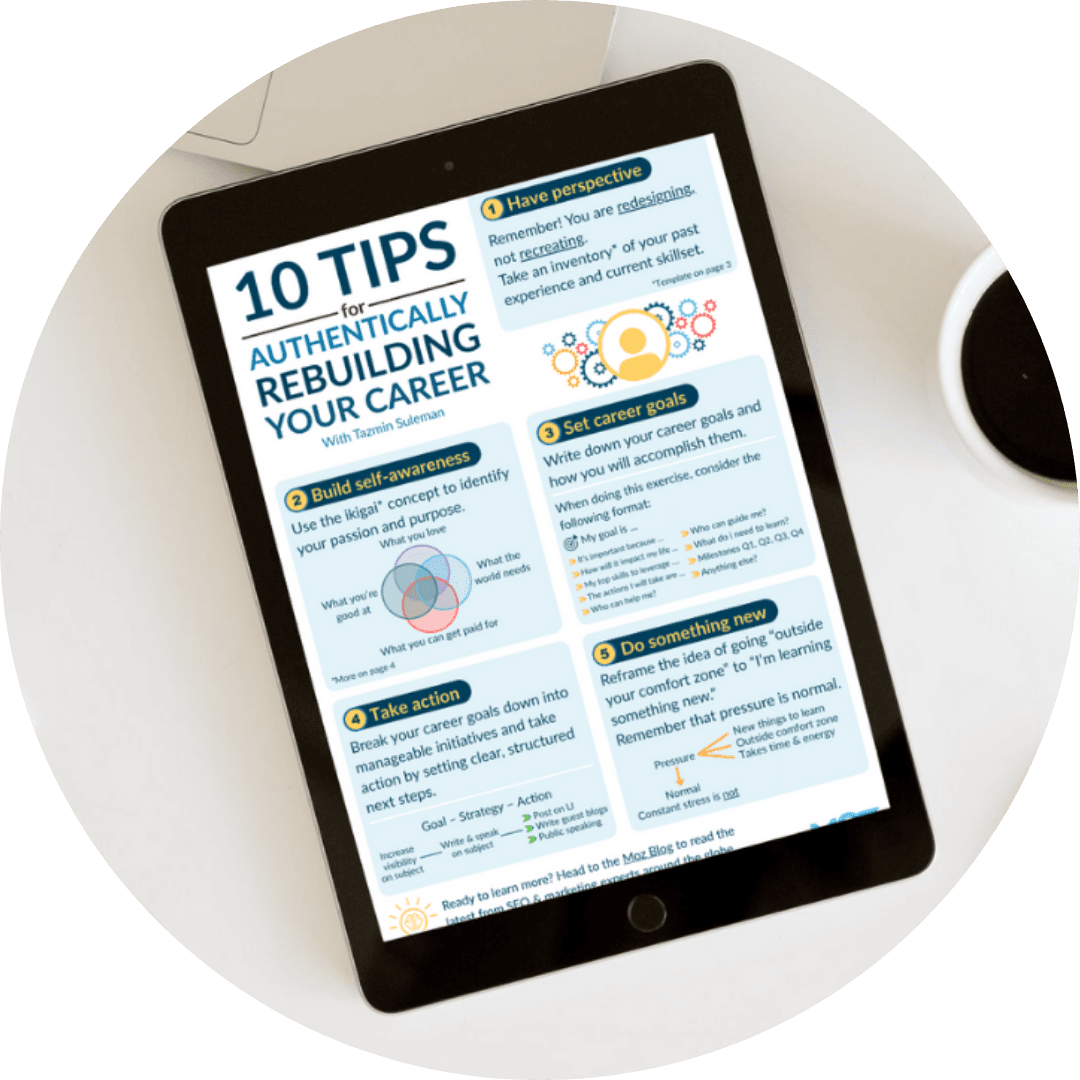
Remember you’re not starting from scratch
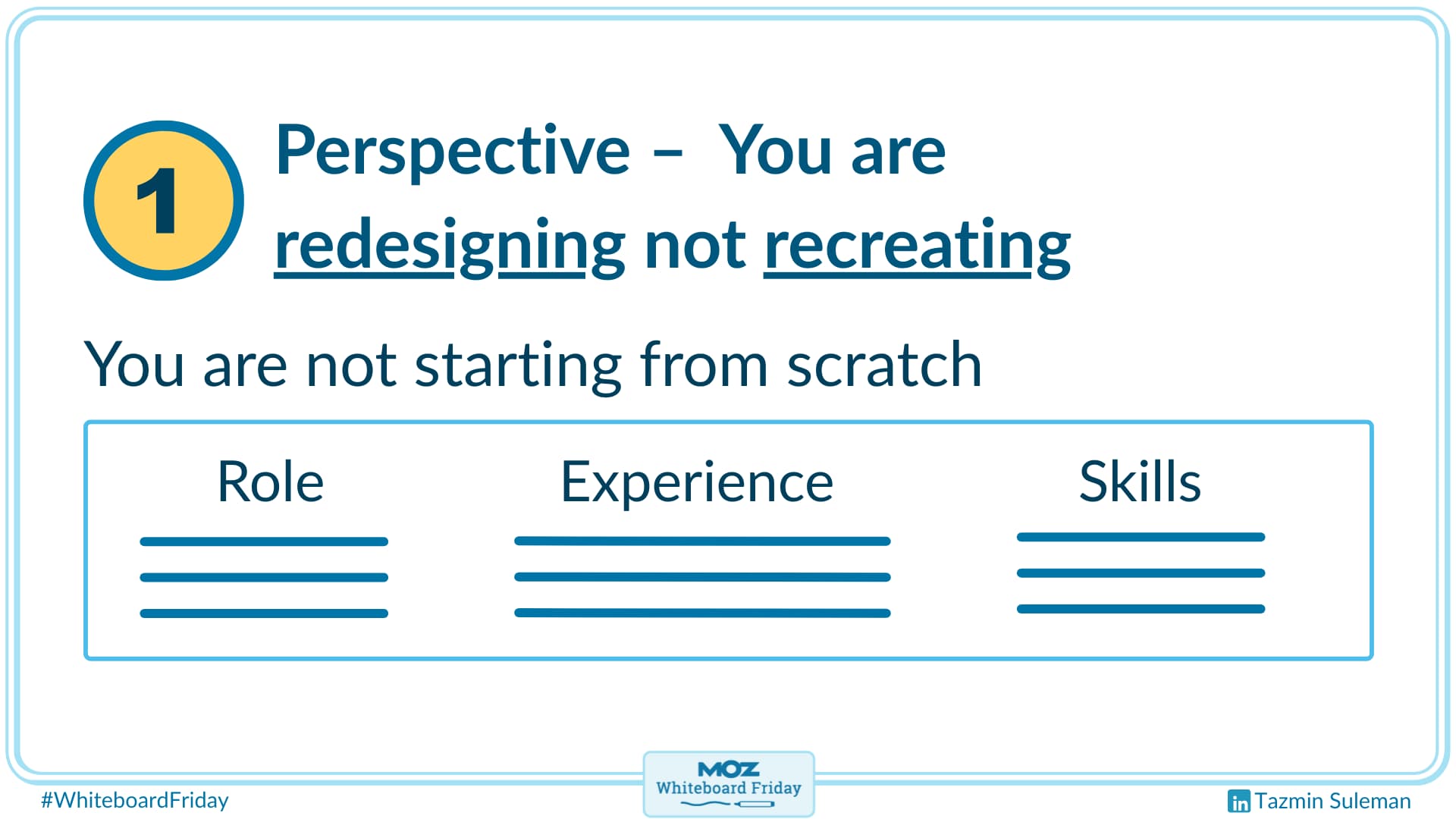
So step one is remembering that you are not starting from scratch. You're redesigning. You're not creating. And this, often, people feel that they have to start from square one and forget about all of the great skills they already have.
So take a moment to do an audit of the roles that you have had, not just paid roles but volunteer roles, and what you did in those roles, the experiences you gained, and the skills that you gained. This gives you a real sense of who you are.
Further your self-awareness
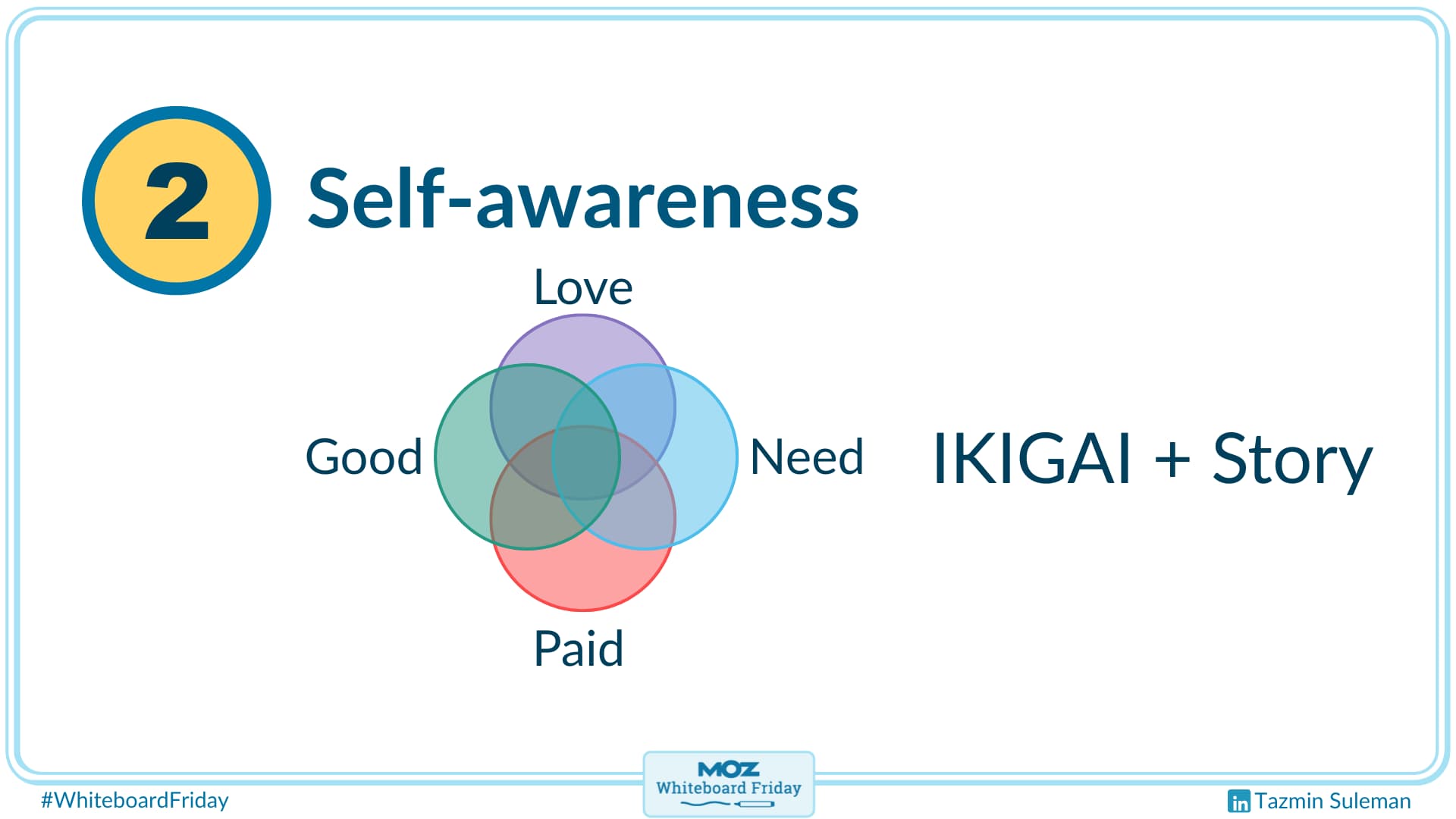
The next step furthers the self-awareness process of looking at what your innate skills are and your passions, and your interests.
A really great way to do this is to use the ikigai procedure. So it's a Japanese concept, and there are four overlapping circles where you go through things that you love doing, that you're good at doing, things that you could get paid for, and things that the world needs.
What you'll notice, when you go through that process, is that there will be things that intersect those circles. So something that you're good at, you may also really love doing. Something that you really love doing, you could possibly get paid for.
The idea is that you build on this. Take your time with this process. It's not a five-minute exercise. Get a big piece of paper. Have fun with it. Stick it on a big wall at the weekend. Draw the circles. Invite other people who know you really well to also add to that. You'll find slowly but surely that there will be things that intersect all of those four circles, and that is your ikigai.
So when you find your ikigai, that is your passion, your purpose, your career, that isn't going to feel like you're working.
Set career goals

Then what I'd encourage you to do is set some career goals. One way you can do this is just do a one-pager, because often when we're setting career goals, we can either not take that process more than thinking about it and sometimes we overcomplicate it.
So do a one-pager. Things that you can write on there are what your career goal is. Why is it important to you? How will it impact your life? So, if I think about my journey, I wanted to be a coach. It was important to me because I wanted to work with people to help them have more careers that were aligned with themselves and flourish in life.
What actions will you take? Because a goal without taking action isn't going to get you any further, and then you feel stuck and then you feel bad that you're stuck. Then you feel like you're procrastinating. I really want you to take those actions that are going to help you get to where you want to go.
Learn from industry experts & level up your career
Register for upcoming webinars or stream past editions on demand to learn practical tips from real marketers.

Who can help me? So this is, is there somebody who can mentor you? Is there somebody who can coach you? Who's going to give you that accountability?
Who can guide me? So this is different from who can help me. Is there somebody who has already taken that path who could guide you on that process?
Milestones. Again, treat this as seriously as you would treat the organization that you work for, their vision, and their goals. Set milestones for yourself. This could be in Q1, I'm going to research this area that I'm interested in. In Q2, I'm going to build that curriculum and reach out to people who can help me. Whatever it is, when you have those milestones in place, you are more likely to make the changes that you need to make.
Take action
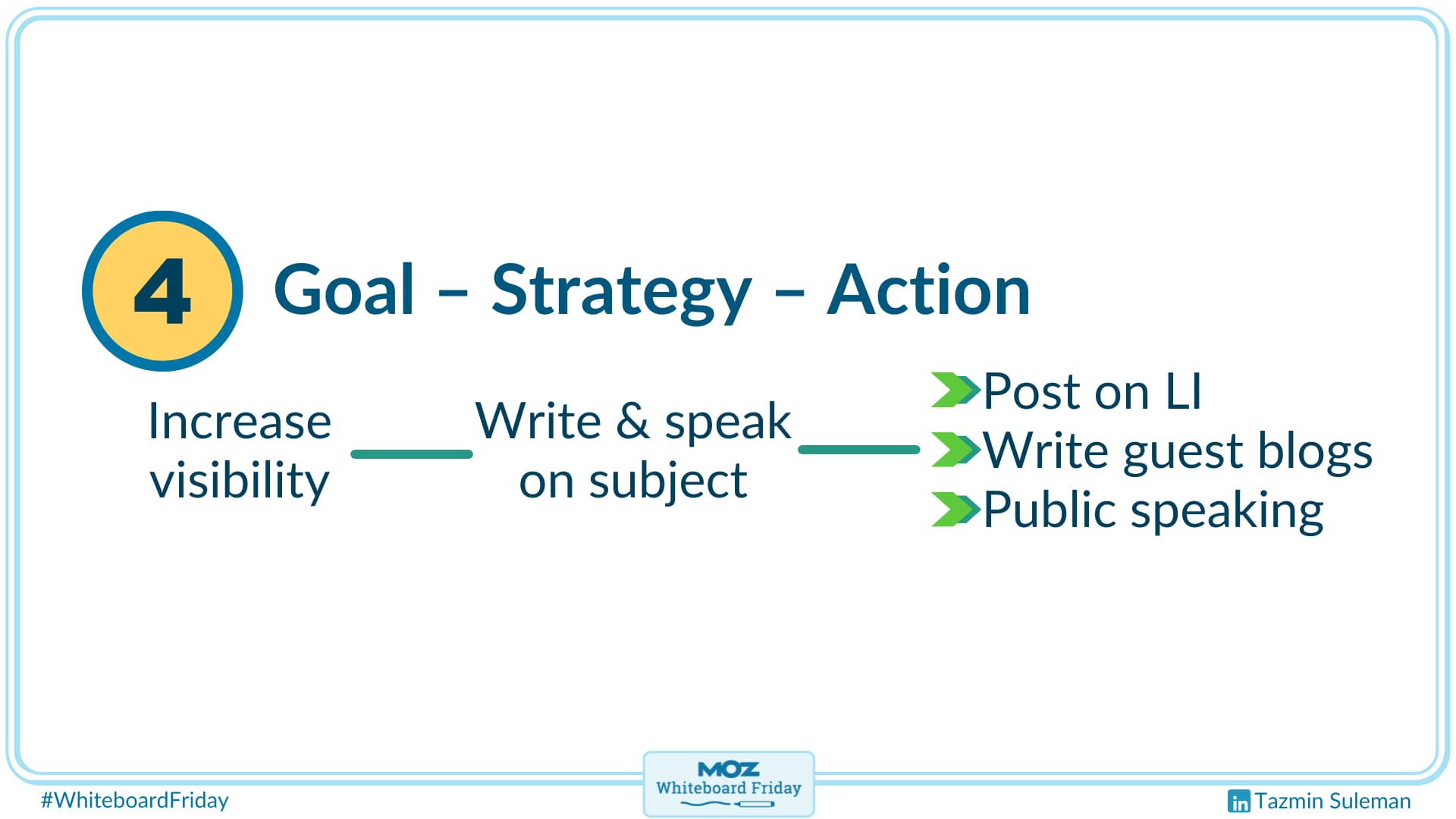
So, step four, I'm going to talk a little bit about those actions. So one really great structure is: What is your goal, what is your strategy, and what are the actions?
So your goal might be that you want to increase your visibility in that new topic that you are interested in. Your strategy may be: I'm going to write and speak about that topic. That's aligned. Your goal and your strategy are aligned. But then the actions, what are they?
When you have the actions listed out, that overwhelm subsides because you know week in, week out what you are going to do. So, possible actions in this goal and strategy are “I'm going to write on LinkedIn three times a week or two times a week”. Then you've got this real clarity that this is what I want to do, this is how I'm going to do it, and these are the specific actions that I'm going to take.
Pressure is normal
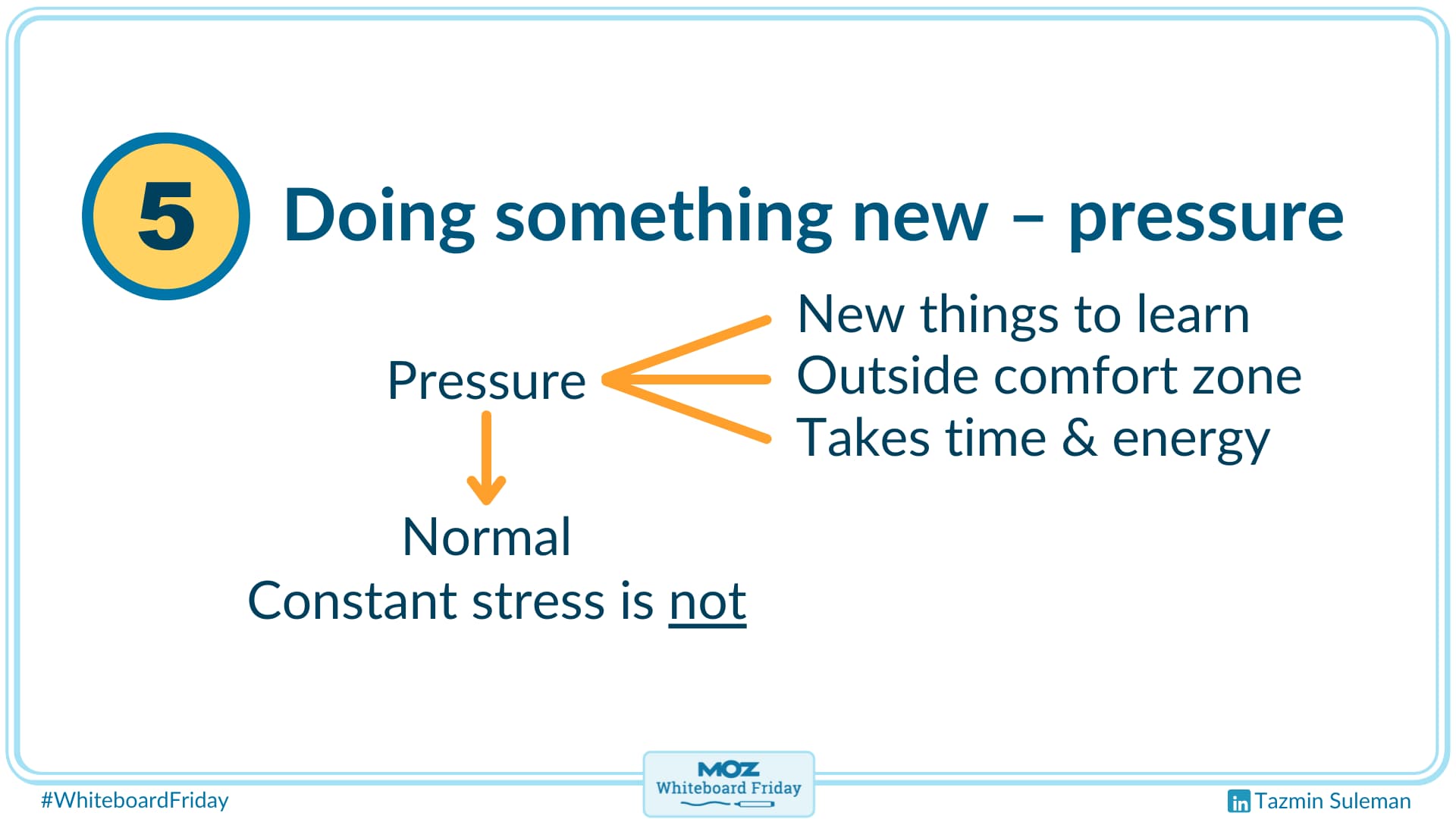
But anytime we do something new, it feels unfamiliar. Unfamiliar doesn't mean bad. All of this journey will create some pressure in your life. Pressure is okay. Pressure is normal. What isn't normal is stress. What happens is, when we haven't built that resilience, those pressure points can feel very stressful.
We're not designed to be in constant states of stress. That then impacts our physical health, our emotional health, and our relationships. Often it impacts the very things that we treasure, that we're actually partly going on this redesigning process for, when you talk about relationships.
Manage stress
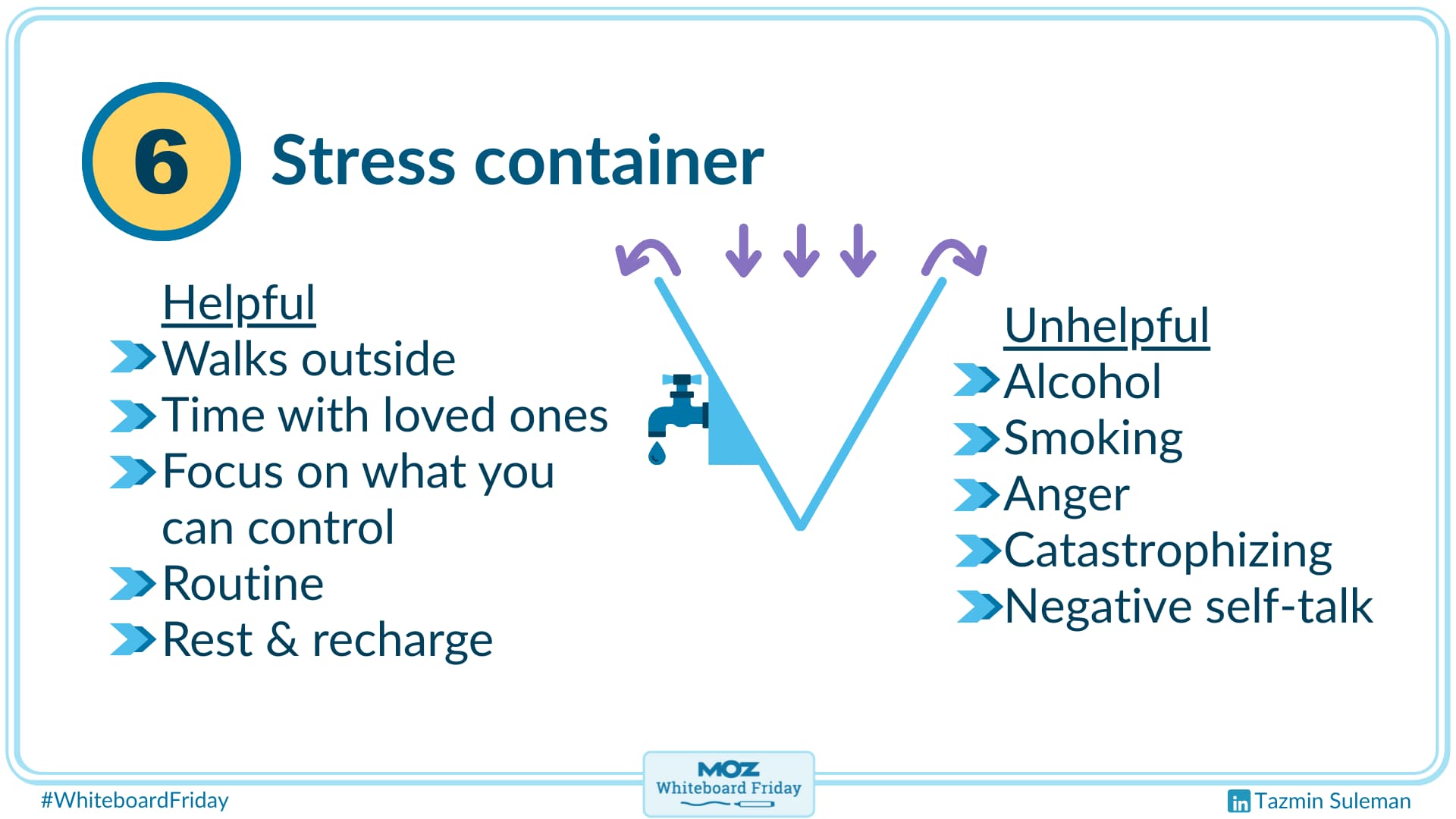
So, how can we manage that stress? This is a really great framework to have in your mind, coined by Mental Health England. It's called the Stress Container. The idea is that everyone has a certain amount of pressure and stress that they can deal with.
If your life is going through a difficult time, so, for example, if you're moving house, if you're going through a process of relationship change, if there's been a bereavement, your stress container will be smaller. Your capacity to cope with stress has become smaller.
The way it works is imagine in the container, all day long, drip, drip, drip, it's going into that container. If nothing is done with it, if you don't deal with that stress, what happens is it overflows.
In this stress container, imagine a tap where you can release stress throughout the day.
There are helpful ways and unhelpful ways, and it will be different for everyone. A helpful coping mechanism for stress is turning your social media notifications off. That's a really good one. Self-care isn't what you do when you're broken. Self-care is what you do every single day to prevent yourself from breaking. Figure out what it is that makes you feel energized and do those things.
Implement the BRAVE technique
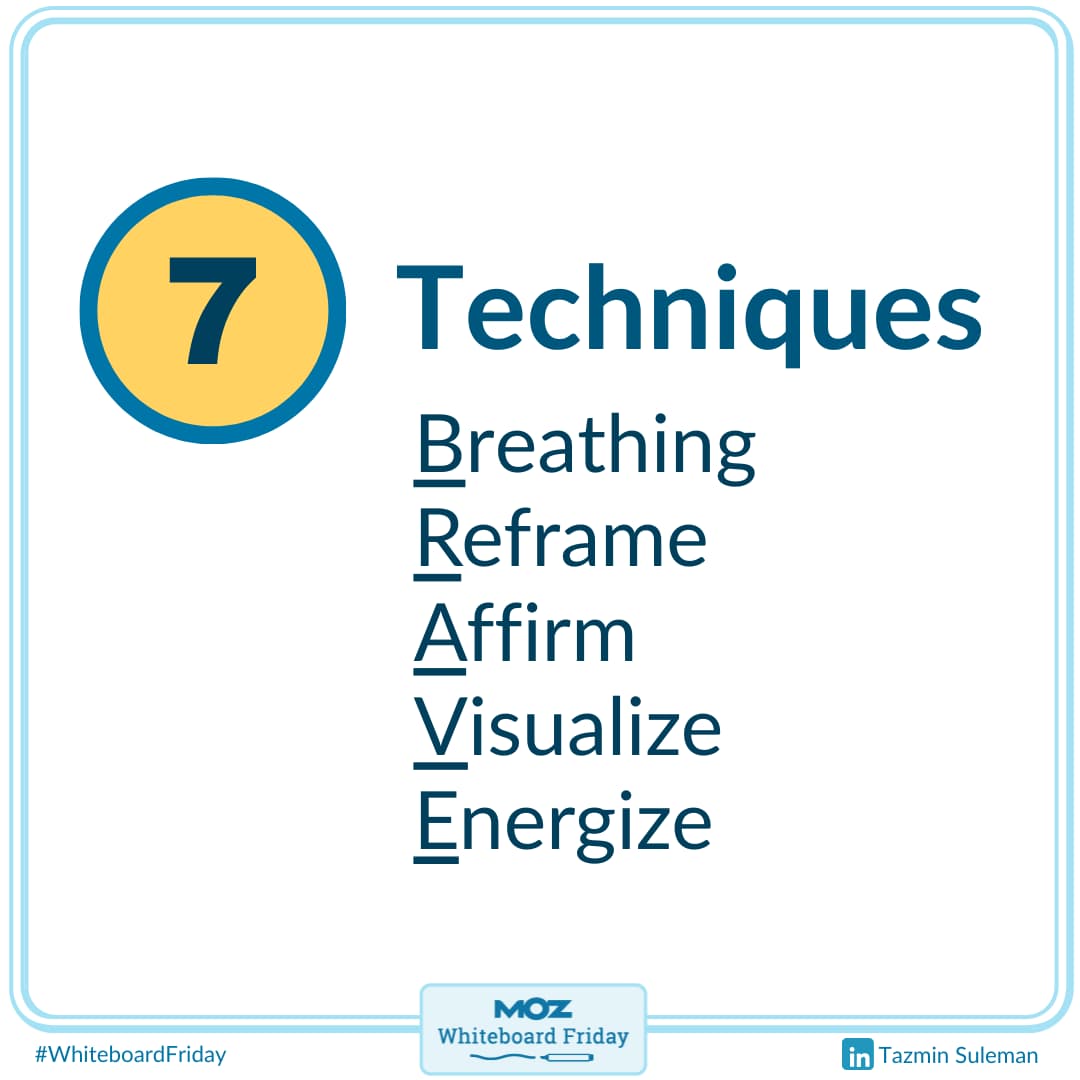
So another way that is really helpful with stress is to have some techniques. This is a technique I created called BRAVE.
So what is it? What does it mean? So B is “breathing.” We underestimate the impact breathing well helps us because when you're breathing in, you're energizing, and when you're breathing out, you are relaxing.
“Reframe.” Reframing is a really great technique. So one of the things is I'm going on stage. I'm about to give a talk. What if I forget my words? We have all of this negative talk in our heads. Another way to think of it is, oh, I'm going on stage to share my story with all of these other people who are there to cheer me on. What this does is it starts quietening down that negative chatter.
“Affirming.” So, affirming and affirmations sometimes get bad press because they sound a bit woo-woo. I remember the first time I was told about affirmations, and I said to the person teaching me, "I don't do affirmations." They said, "Well, you just did." So we are affirming things about ourselves all the time.
We can choose to affirm, oh, I'm going on stage and I have nothing to say to I'm going on stage and I have something to say. Which of those affirmations is going to help you on your journey? You pick. I'm thinking the latter will be more helpful.
So this isn't about affirming the end result. This is affirming about where you are on the journey.
“Visualization.” If you think about a theater production, you wouldn't put on a theater production without doing a dress rehearsal. You can visualize yourself at that conference, feeling happy, feeling relaxed. Going through your talk, you may forget a little bit of it, but it doesn't matter as long as the main message you want to get across has got across. When you visualize this, what happens is that when you actually get on stage, your brain already thinks that you've done it.
Then the E is “energize”. Emotion is an energy in motion. So pick the emotion that is going to help you. That could be an emotion of curiosity. That could be an emotion of excitement. That could be an emotion of contentment and happiness that you are on this journey. The BRAVE, as I said, works really well in any of those components. But combined, it's really, really powerful.
Build your resilience
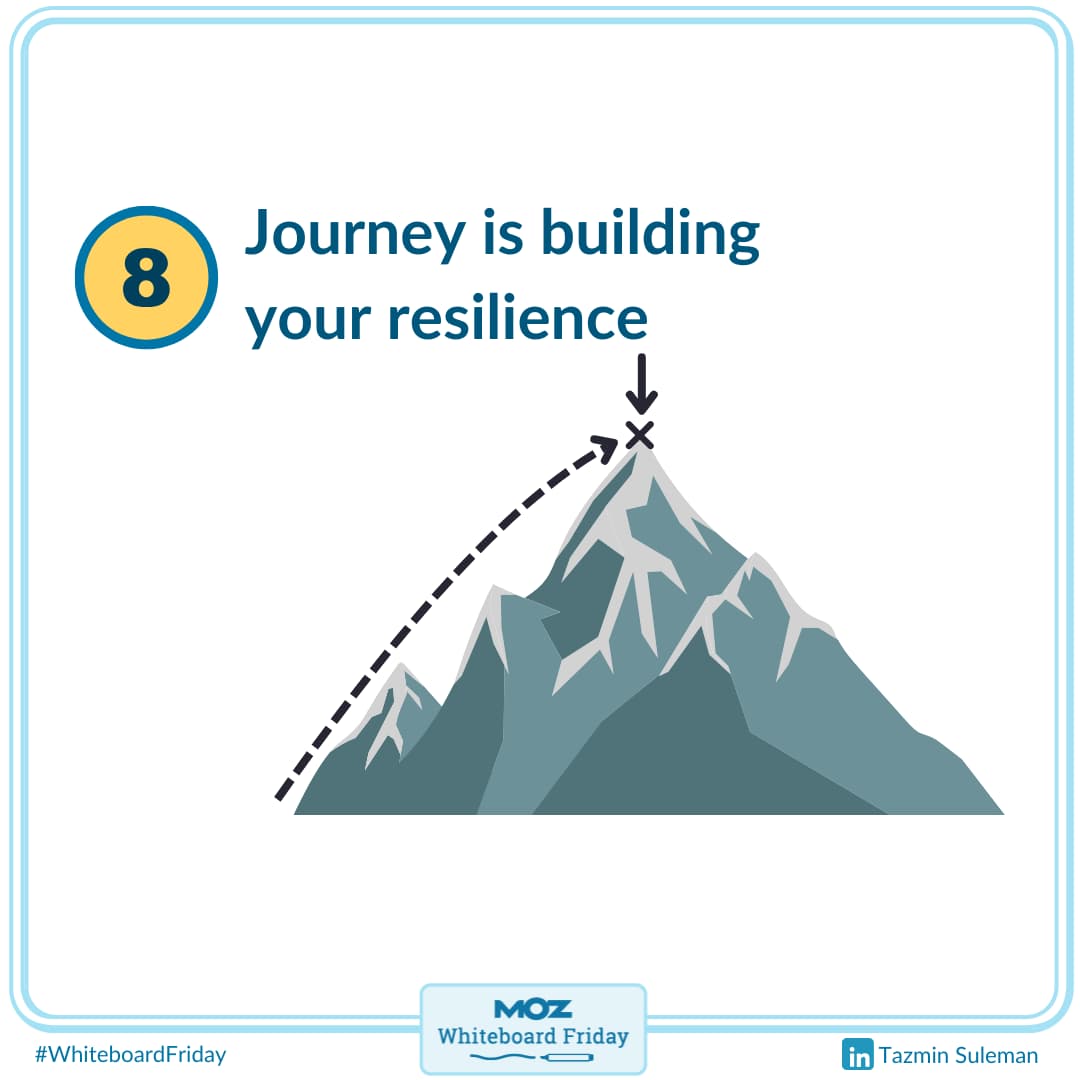
The next point I want to make is that of resilience. Often we want a goal and we want to get there quickly, and we lose sight of the fact that that journey is important.
So I've drawn a mountain, in case you didn't know what this was, but it's a mountain. I picked it because my brother is currently climbing Mount Kilimanjaro. Mount Kilimanjaro is in Tanzania, where I come from. Now his goal would be to get to the top. There are two ways to do that. You could either be helicoptered to the top, or you could climb. In some ways, the helicoptering to the top sounds quite appealing, right, because you just get in a helicopter, get to the top of it, put in your flag, Taz, whatever. But if that's the path I chose, I would die because my lungs have not got acclimatized.
You need to go on that journey to acclimatize yourself to what you need to be when you get to the end.
So if your goal is to become a leader of a team, you have to learn to understand people, their motivation, emotional intelligence. None of that comes gift-wrapped in a box. You have to learn that.
Don't Miss the SEO Event Everyone Will Be Talking About
The insights from just one MozCon speaker can transform your entire SEO strategy
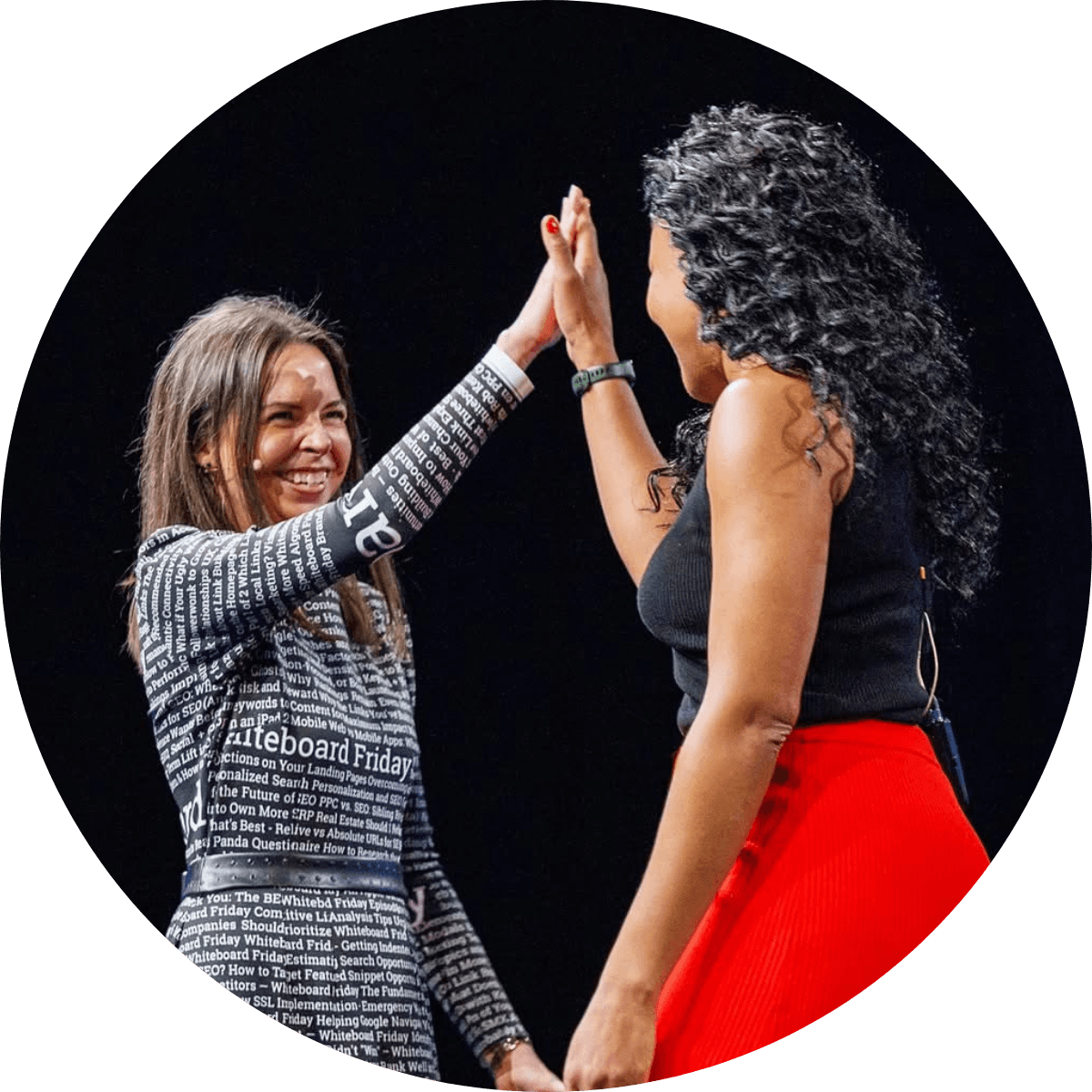
Acknowledge your progress
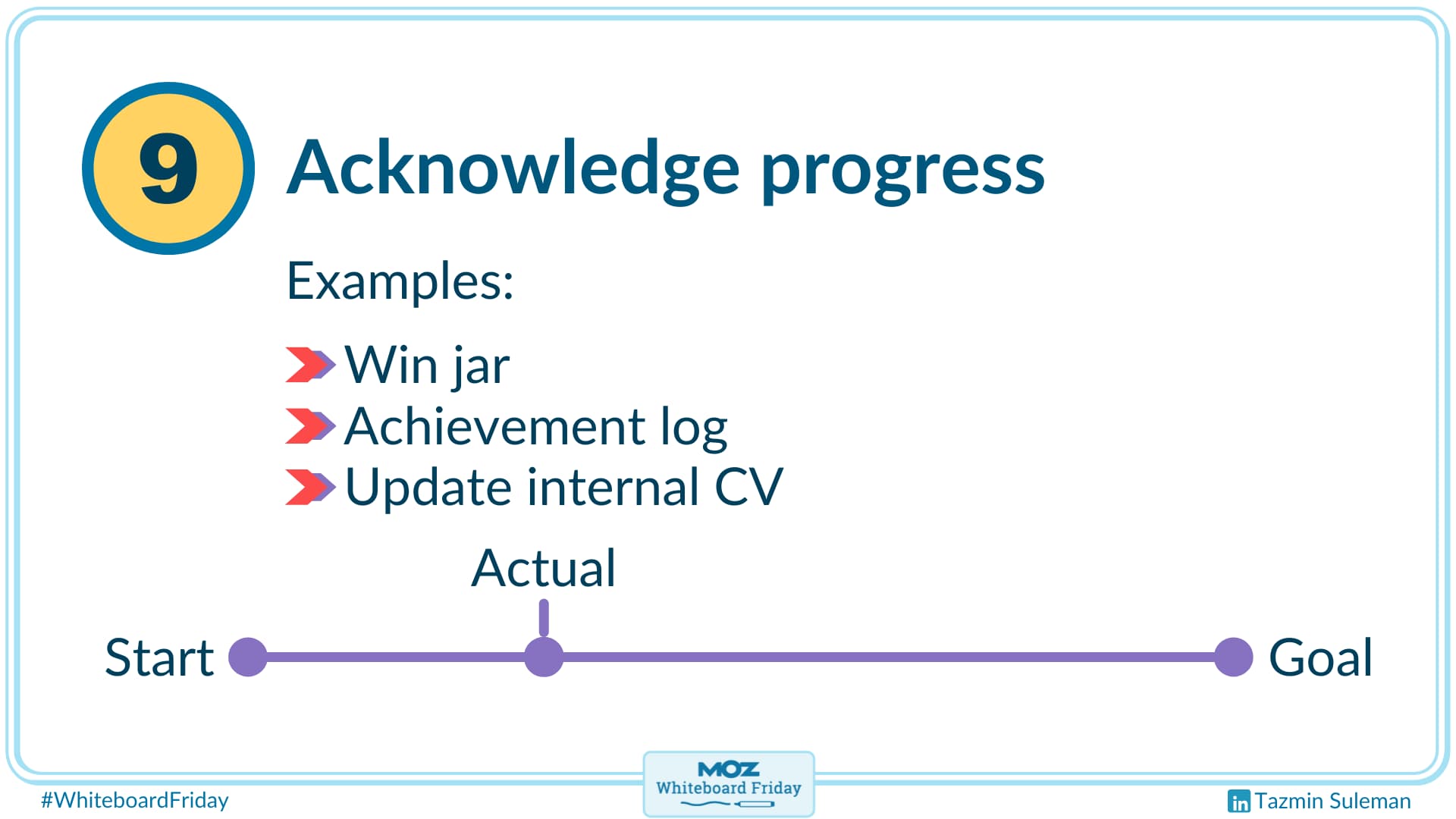
Now I want to come on to something a bit lighter, a bit more fun, but something I see time and time again people don't do enough, and that is acknowledging the wins. Acknowledge your progress.
You can do it in various ways. I have a win jar. So it is a jam jar, empty clearly, that sits on my desk, and every day on a piece of paper I write down a win and I put it in the jar. Why I like using a jam jar is that I can see the pieces of paper pile up. Those are my wins. At the end of January, I put it in January's envelope, and then I start again in February.
It could be a spreadsheet, whatever works for you. But acknowledge those wins.
So take time to capture those wins, acknowledge that new information you have learnt, that new skill that you have learnt, because otherwise what we're doing is we're building this new career on very shaky ground, but you've built more solidity in that.
So take it. What's that program? "The Weakest Link." They answer all of the questions, and they forget to bank the win. Bank your wins.
Update your personal brand
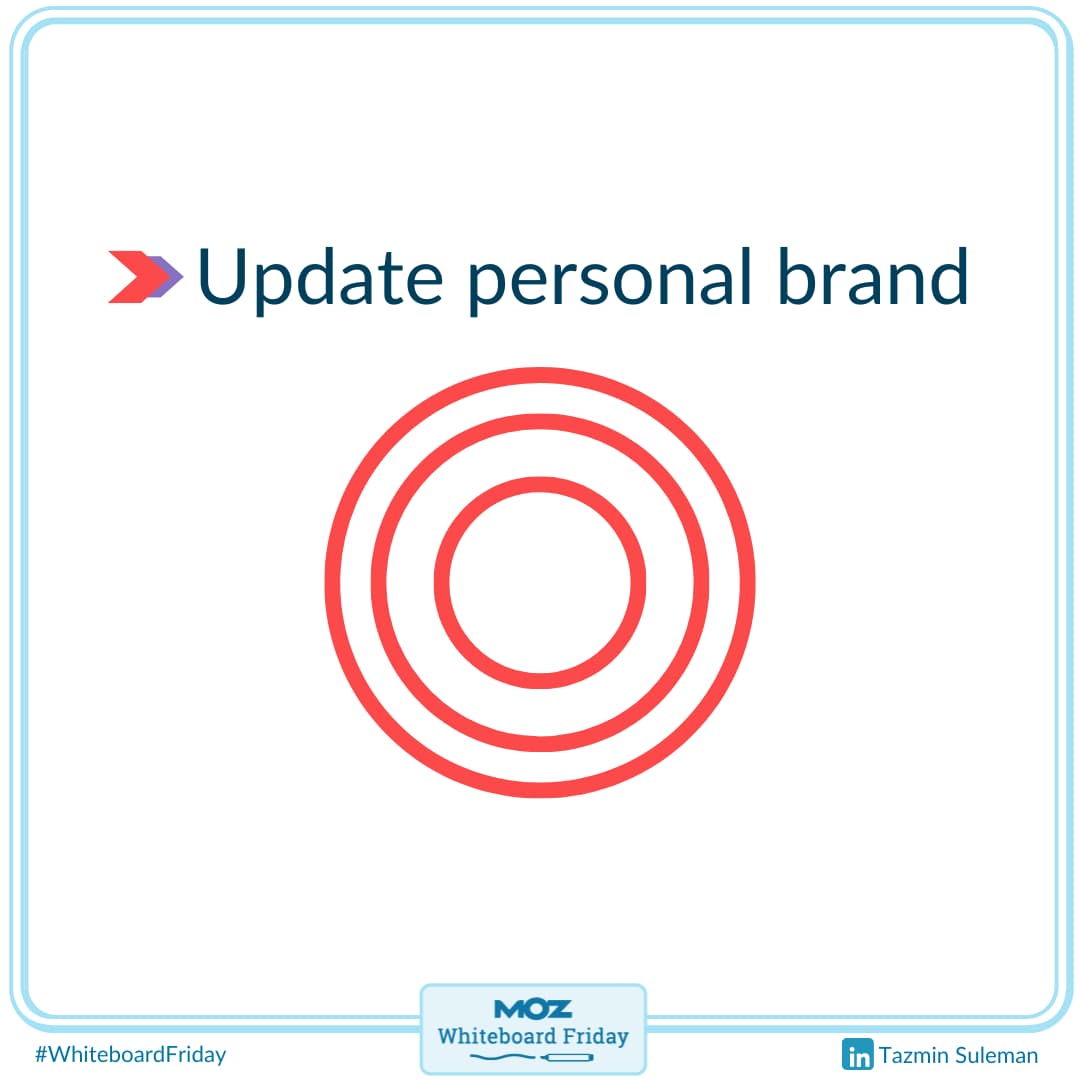
Update your personal brand.
So, imagine these are three elastic bands. The outer one is the whole of you. The middle one is the part of you that is relevant for your new career path. The inner one is the part of you that is relevant for your new career path that you are willing to share with everyone else, because “authentically” doesn't mean everything. “Authentically” is the part of you that you are willing to share.
Each of these elastic bands will change shape because you are evolving. Every day you are evolving. So, as you are learning more and you have more to share, this circle will get bigger. So again, this is another way of acknowledging what you have learnt and owning it.
Have fun!
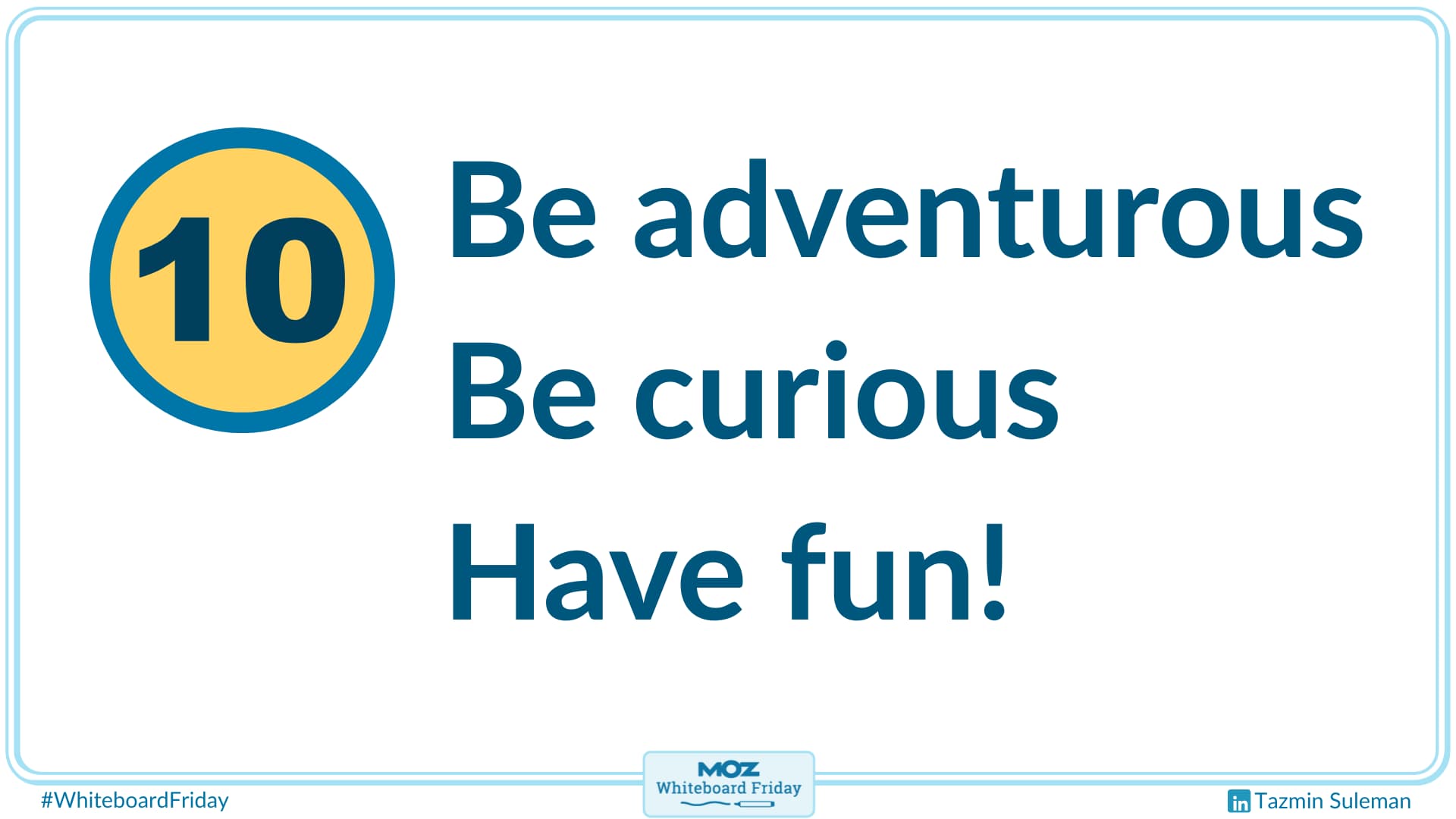
The last one, have fun. I never knew four years ago, when I thought, "You know what, let's just live the life I want to live finally, working and learning and development, coaching professionals on their career path," I never imagined that one day Moz would ask me to come and talk about the story.
So you have no idea what is behind door number 10. unless you open door number 1 So have fun with it. Be curious about it. Be adventurous. And be you because all of that, again, when you are in a career authentically, you're so aligned with yourself that it is going to feel beautiful.
And I wish you well. Thank you.
The author's views are entirely their own (excluding the unlikely event of hypnosis) and may not always reflect the views of Moz.




![How to Create an SEO Forecast [Free Template Included] — Whiteboard Friday](https://moz.rankious.com/_moz/images/blog/banners/WBF-SEOForecasting-Blog_Header.png?w=580&h=196&auto=compress%2Cformat&fit=crop&dm=1694010279&s=1a76a7c52ec3cdfe4e321bf5dae6894e)